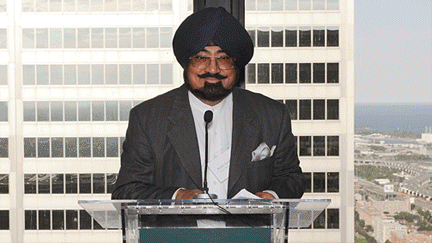Rahul Dev Burman Bio
February 4th, 2020
Rahul Dev Burman was an Indian music director. From the 1960s to the 1990s, Burman composed musical scores for 331 films. Burman did major work with Asha Bhosle and Kishore Kumar and scored many of the songs that made these singers famous. He has also scored many songs sung by Lata Mangeshkar. Nicknamed Pancham, he was the only son of the composer Sachin Dev Burman.

He was mainly active in the Hindi film industry as a composer, and also provided vocals for a few compositions. He served as an influence to the next generation of Indian music directors, and his songs continue to be popular in India and overseas.

Early life:
Burman was born to the Bollywood composer/singer Sachin Dev Burman and his lyricist wife Meera Dev Burman (née Dasgupta), in Calcutta. Initially, he was nicknamed Tublu by his maternal grandmother, although he later became known by the nickname Pancham. According to some stories, he was nicknamed Pancham because, as a child, whenever he cried, it sounded in the fifth note (Pa), G scale, of music notation.

The word Pancham means five (or fifth) in Bengali, his mother tongue. Another theory says that the baby was nicknamed Pancham because he could cry in five different notes. Yet another version is that when the veteran Indian actor Ashok Kumar saw a newborn Rahul uttering the syllable Pa repeatedly, he nicknamed the boy Pancham.

Burman received his early education in West Bengal. His father S. D. Burman was a noted music director in Bollywood, the Mumbai-based Hindi film industry. When he was nine years old, R. D. Burman composed his first song, Aye meri topi palat ke aa, which his father used in the film Funtoosh (1956). The tune of the song Sar jo tera chakraaye was also composed by him as a child; his father included it in the soundtrack of Guru Dutt’s Pyaasa (1957)

In Mumbai, Burman was trained by Ustad Ali Akbar Khan (sarod) and Samta Prasad (tabla). He also considered Salil Chowdhury his guru. He served as an assistant to his father, and often played harmonica in his orchestras.
Read More From Wikipedia, the free encyclopedia
Comments are closed.












